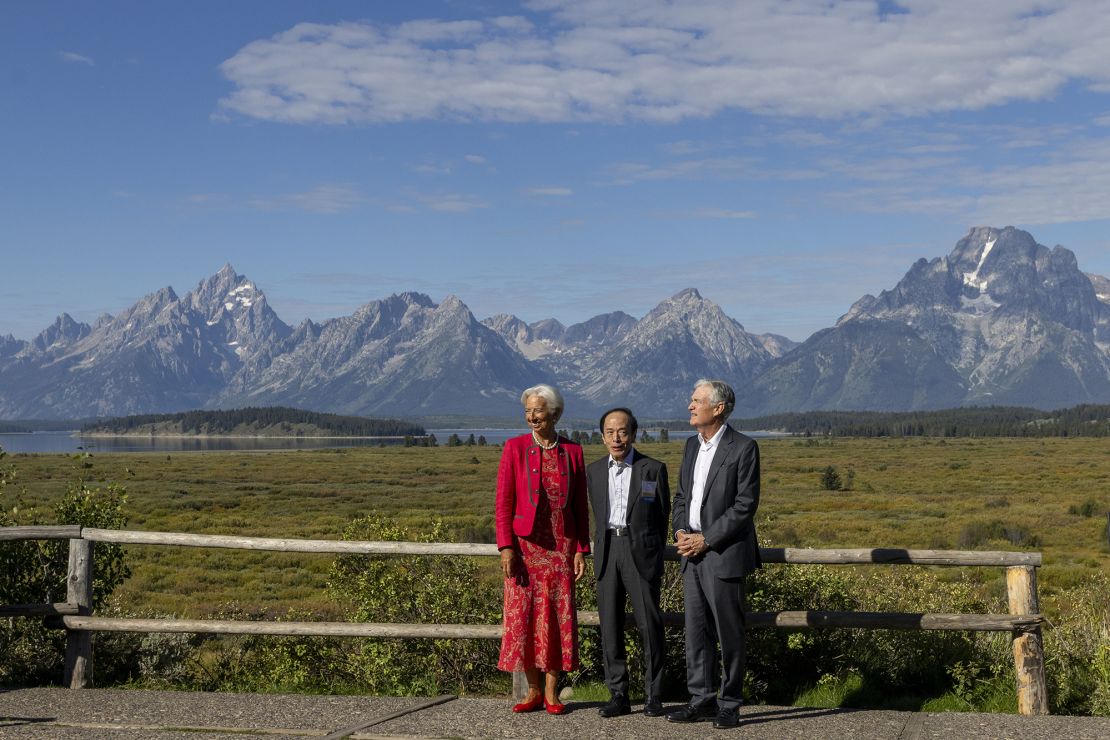The Super Bowl for economists (aka the Jackson Hole Economic Policy Symposium) just wrapped on Saturday, so let’s get you the top three quotes, starting with…
- 🇺🇸 Jerome Powell, Chair, Federal Reserve: “There is significant uncertainty about where all of these policies will eventually settle“
There’s always been tension in the Fed’s dual mandate of chasing maximum employment versus stable prices. But the chair suggested this tension now looks different. Why?
He argued President Trump’s various trade, immigration, and regulatory reforms mean (for example) that while jobs growth is down, so is labour supply (fewer migrants), leading to a “curious” new balance: low unemployment, while tariffs nudge at prices.
Stay on top of your world from inside your inbox.
Subscribe for free today and receive way much more insights.
Trusted by 148,000+ subscribers
No spam. No noise. Unsubscribe any time.
But ultimately, Powell made clear he’s now more concerned about a slowing economy than rising prices, making a September rate cut more likely. So those were the summit’s most anticipated remarks this year. But the spiciest contribution came from…
- 🇯🇵 Kazuo Ueda, Governor, Bank of Japan: “Wages are rising and labor shortages have become one of our most pressing economic issues”
Why so spicy? In many ways, Japan now offers a vivid window into the future. How?
While the late prime minister’s ‘Abenomics’ helped, Ueda suggests it’s really now two other things that’ve jolted Japan’s economy out of its deflationary spiral: i) the Covid shock, and ii) a demographic trend that started in the 80s: its shrinking/ageing population.
And Ueda used his remarks to map out the options ahead, including:
- a) encourage more women and seniors to work
- b) bring in more young migrants, and/or
- c) deploy more AI/robots.
So which way will Japan go? Ueda notes Japan already crushed option a), driving women’s participation up from 60% to 78% in just a couple of decades. And option b) is politically tricky in Japan, where migrants make up just 3% of the workforce.
So the answer? Ueda seems to hint that the path of least resistance is via option c), with Japan’s AI/automation uptake still just getting started.
It’s a dilemma that was also tackled on-stage by…
- 🇪🇺 Christine Lagarde, President, European Central Bank: “History is a gallery of pictures in which there are few originals and many copies”
Yes, that’s an Alexis de Tocqueville quote, but Lagarde cited it to argue we’re now in one of history’s few ‘original’ chapters, with some old economic rules no longer applying.
An example: Lagarde notes the EU managed to tackle inflation without putting millions out of work. How? There are technical answers like ‘labour hoarding’, as firms hold workers rather than fire and re-hire later. But Lagarde also highlights immigration, noting Germany’s economy would now be 6% smaller than in 2019 if not for foreign workers.
But like Japan’s Ueda before her, Lagarde warns that immigration might only achieve so much: with the kind of word choice that’d make even the most risk-averse Brussels bureaucrat blush, Lagarde cautions that “political economy pressures may increasingly limit inflows” (ie, voters are not so keen on immigration as the solution to labour shortages).
The answer? Like Ueda, Lagarde points over the horizon to a future of AI and automation.
Intrigue’s Take
It’s been interesting to watch robots and automation go from being a fun tool for life’s menial tasks, to almost a hope and a prayer uttered by some of the world’s most powerful central bankers confronting challenges now beyond their monetary reach.
And the difference? A mere decade or so of continued demographic deceleration.
The result is now an awful amount of political and economic expectation resting on a tech we’re still getting to know. And it’s not couched as ‘if’, nor even ‘when’, but almost more as the ‘only’ scalable and sustainable solution that might now help advanced economies maintain their output against the backdrop of shrinking pools of human labour.
Either way, probably time to brush up on Asimov’s three laws of robotics.





